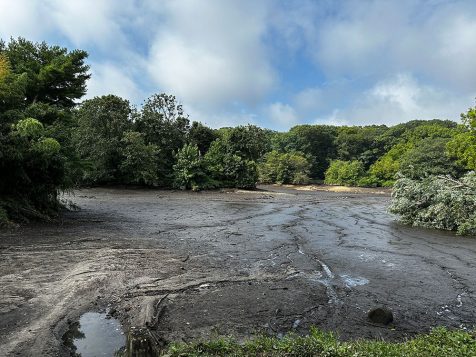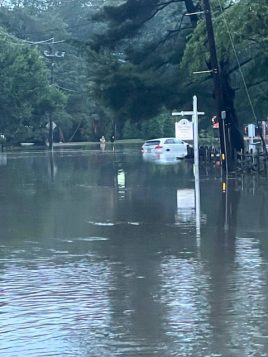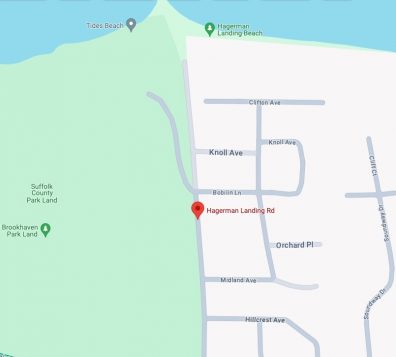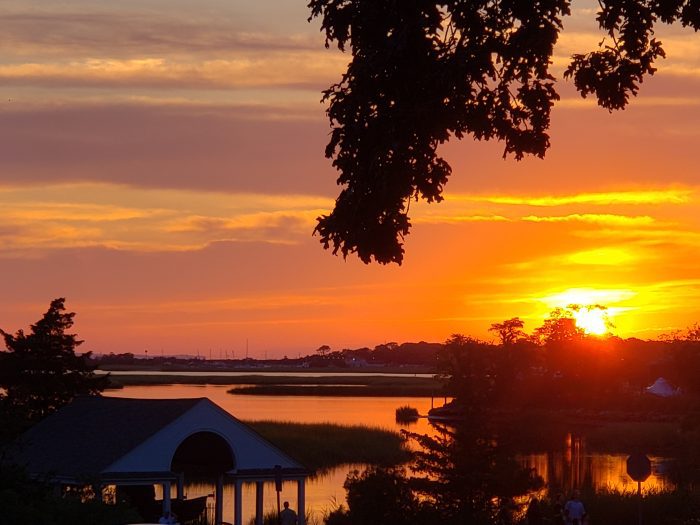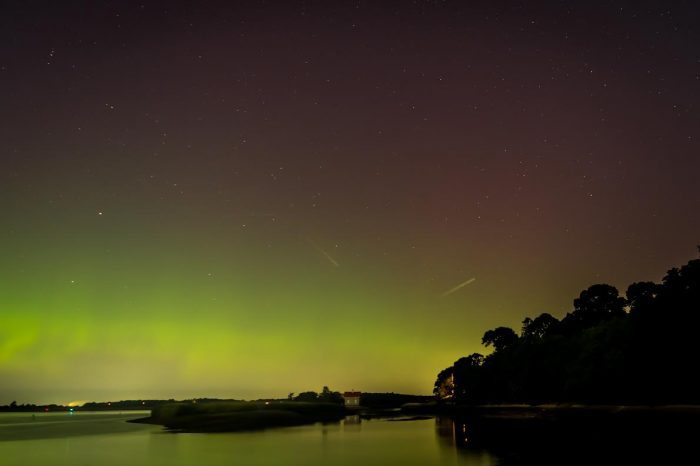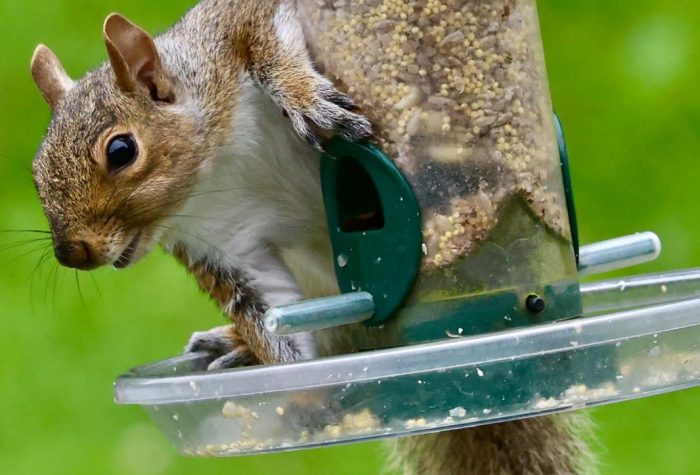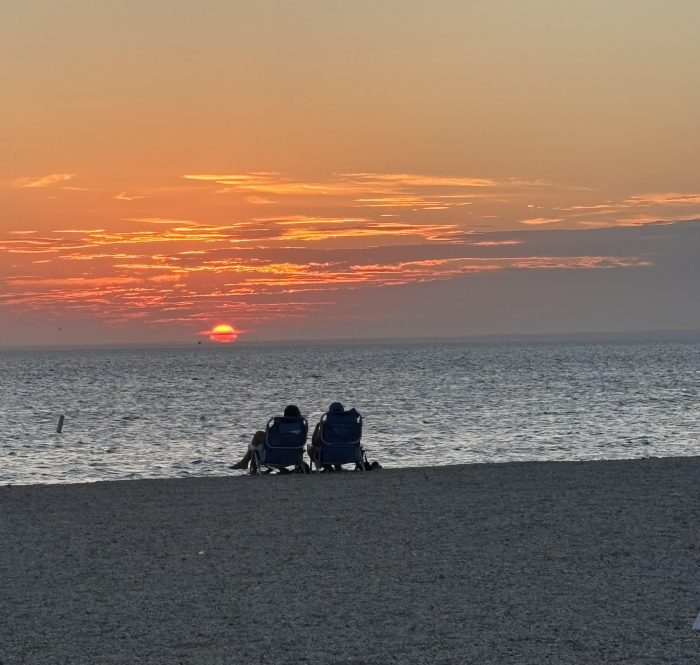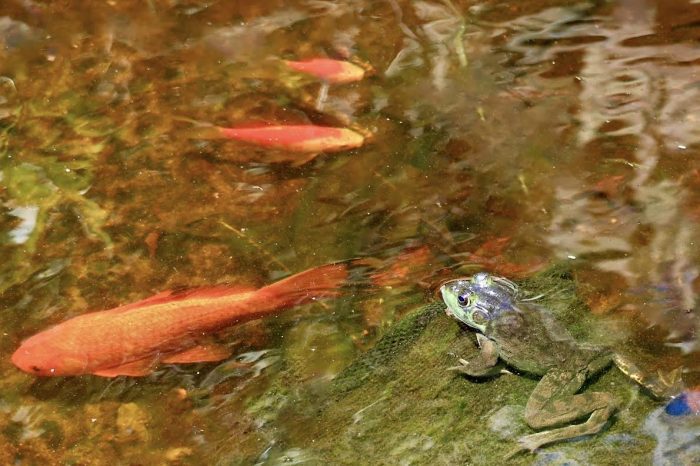By John L. Turner

On a warm morning in early August, my wife Georgia and I climbed aboard a pontoon boat stationed along a canal in Freeport between two seafood restaurants, joining two dozen kindred spirits excited to explore the marsh islands dotting Middle Bay. While there were several purposes for the trip — getting to know other individuals committed to conservation through involvement in numerous downstate Audubon chapters being a prime one — once the boat began moving birds became the central focus. We were all interested in seeing what birds might be around as “fall” migration gets under way for a variety of coastal bird species.
The first highlight was several Black-crowned Night-herons perched on large wooden pilings followed by a family of Killdeer standing around on some earthen mounds in a forgotten lot at the corner of the canal and bay. Killdeer derive their name from their ringing call which sounds like their name — kill-deer! kill-deer! killdeer! Killdeer are a species of shorebirds but typically aren’t found along the shore. Rather they are birds of open places like athletic fields and large gravel patches, vulnerable places that sometimes get them and their chicks in trouble.
Speaking of shorebirds, this was the group I was most hoping to see. Even though we’re on a boat in mid-summer, many species of shorebirds have embarked on their southbound “fall” sojourns, some heading south from breeding grounds situated north of the Arctic Circle. And where might they be heading? Well, some species like Red Knots eventually make their way to Tierra Del Fuego at the southern tip of South America. Many others select other latitudes in South America and Central America while still others choose the southeastern United States or islands in the Caribbean.
As all these migratory journeys illustrate, shore bird species —plovers, sandpipers and the larger ones like godwits — are indeed globetrotters of the Western Hemisphere. Nearly two dozen shorebird species are known to undertake non-stop flights of 3,000 miles or more — that’s roughly the distance from New York to Seattle. The fuel? Subcutaneous fat stored under the skin. Take that you ultramarathoners out there! Long Island is one of the many “migratory motels” these highly mobile species depend upon during migration, a key stage in completing their annual life cycles.
We soon saw a small flock of shorebirds sitting amidst a few common terns along a small pond in the marsh — a single Whimbrel and half a dozen Black-bellied Plovers. In full breeding plumage the latter species is one of the most striking birds in North America — jet black on the breast, belly, lower flanks and cheeks with a white cap on its head and upper neck (please don’t hesitate to pause your reading of this article to check out the image on the Internet). The back is speckled in a salt-and-pepper pattern.
In comparison, the Whimbrel (once called the Hudsonian curlew), is a modest, understated bird with a back that contains flecking that’s medium brown in color, a lighter brown neck and a handsome crown with two prominent brown crown stripes and two more brown stripes running through the eyes. More prominent still is the long decurved bill, perfectly suited from pulling fiddler crabs from their burrows. The decurved bill gives rise to the generic part of its scientific name (Numenius phaeopus). Numenius means “of the new moon” a reference of the similarity to the crescent shaped bill to the crescent moon that forms right after the new moon.
Moving south into the bay we slowly worked along the edge of an island and were rewarded by other shorebird species — some ‘peeps’ like Semipalmated and Least Sandpipers and a few Sanderlings. A pair of Greater Yellowlegs, living up to their name with long, bright yellow legs, stood nearby and in the marsh a few Willets were feeding, a larger shorebird species that nests on Long Island. They were soon joined by a few American Oystercatchers, highly distinctive and large shorebirds with long bright red bills that are also local nesting birds.
We continued on and two more species were soon tallied — Semipalmated Plovers and the harlequin looking Ruddy Turnstone (another fine time to pause to look up the species on the Internet). This turnstone species, another shorebird with some populations breeding above the Arctic Circle, has a ruddy-colored back and tail with black barring, a white belly, bright orange legs, and a distinctive black and white facial pattern with two white spots between the eyes and the base of the bill. While this bold pattern makes the bird stand out while sitting on a rock, dock, or on the sand at a marsh’s edge, it helps the bird blend in while sitting on eggs in its vegetated tundra habitat in the Far North. Ruddy Turnstones get their name from the aforementioned ruddy back and their habit of flicking over shells and stones while foraging for food on the beach. This unique foraging behavior allows them to find food items other shorebirds cannot find.
Semipalmated Plovers are a handsome shorebird species. A uniform chocolate brown back and top of head with a clean white belly and throat separated by a bold black bar, adults in breeding plumage have an orange and black bill and orange legs. Their name is derived from the fact their feet are partially webbed but not entirely webbed like the foot of a duck. They’re similar in appearance and shape to Piping Plovers, a small shorebird that nests on beaches around Long Island. In fact, one birder has noted that a Semipalmated Plover looks like a sandy colored Piping Plover after being submerged in water and its plumage darkens.
Along the East Coast shorebirds were once actively hunted for sport and to a lesser extent for food and such was the case on Long Island. There are many written accounts of hunting trips to mud- and sand flats, marshes and the outer beach to gun for shorebirds, often using wooden decoys to draw them in. (There were a number of famous decoy makers on Long Island and some of their decoys can be purchased online). The hunting pressure was so intense and relentless and so many birds killed that many shorebird species declined precipitously.
One species, the Eskimo Curlew, closely related to the Whimbrel, is feared to be extinct from persistent hunting for the table, as the bird was considered quite delectable, containing lots of fat, a fact that led to their colloquial name of ‘doughbirds’. The last known flock of Eskimo Curlews was seen in Barbados in 1963. It was a common shorebird that passed through Long Island during fall migration. Today, almost all shorebird species are legally protected from hunting. One exception is the most ‘unshorebirdlike’ of all shorebirds — the American Woodcock, a forest dwelling shorebird that is still actively hunted.
Today, shorebirds face threats of a different nature. Habitat loss, as shorelines are hardened or developed, reduces the availability of feeding habitat, compromising the quality of their ‘motel’ experience, and climate disruption adds a huge layer of concern that is hard to measure in how it might affect the welfare of these iconic species. But there are many individuals and organizations working to safeguard shorebirds — from ending shorebird hunting in the Caribbean to artisanal salt farmers in Honduras working to protect habitat for black-necked stilts (we get a few that pass through Long Island every year) to the creation of the Western Hemisphere Shorebird Reserve Network (WHSRN) that identifies and protects sites critical as stopover habitat for shorebirds.
For most of us, shorebirds’ lives are invisible, their existence dependent on remote and wild landscapes often in places so very distant from us that our paths rarely cross. When they do it’s a momentary gift — maybe it’s a scurrying flock of sanderlings retreating from the foam of a crashing ocean wave or the piercing tew! tew! tew! of a greater yellowlegs you’ve flushed from a shore edge while kayaking or watching the broken wing act of an adult piping plover trying to distract you away from its nest or young. As the boat experience illustrates, we are in the season of gift giving.
A resident of Setauket, author John L. Turner is conservation chair of the Four Harbors Audubon Society, author of “Exploring the Other Island: A Seasonal Nature Guide to Long Island” and president of Alula Birding & Natural History Tours.












